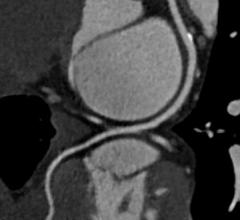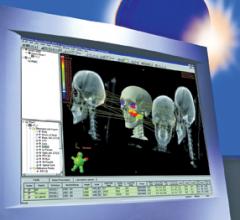If you enjoy this content, please share it with a colleague
Philips
RELATED CONTENT
There are currently three major trends in cardiovascular computed tomography (CT) technology — lowering radiation dose, development of myocardial perfusion imaging and the use of CT datasets for procedural planning, especially for transcatheter aortic valve replacement (TAVR).
July 13, 2012 — Royal Philips Electronics announced that it has embarked on a five-year joint research and development (R&D) program with the St. Petersburg State Polytechnical University, the Vavilov State Optical Institute and the Ioffe Physical Technical Institute.
With last year’s U.S. Food and Drug Administration approval of transcatheter aortic valve replacement (TAVR) and increasingly complex cath lab and hybrid operating room (OR) interventions, ultrasound is playing an increasing role in procedural guidance. This is especially true for use of 3-D/4-D transesophageal echo (TEE), which enables the more precise surgical-view visualization required for structural heart procedures, such as atrial septal defect (ASD) occluder and MitraClip deployments. These repairs would otherwise be extremely difficult to accomplish using fluoroscopy alone.
June 29, 2012 — More than 61 companies will display their latest products and services at the American Society of Echocardiography (ASE) Annual Scientific Sessions, June 30-July 3 in National Harbor, Md. Highlights from the show floor, as reported by the vendors, will include:
June 25, 2012 — KLAS released the 2012 Best in KLAS Awards: Medical Equipment and Infrastructure report, which details what end-users think about imaging systems from specific vendors. The report recognizes leaders in individual medical equipment market segments as Best in KLAS, including digital X-ray, CT, MRI (1.5T and 3.0T), ultrasound and mammography.
June 22, 2012 — Philips introduced the iDose4 Premium Package, which includes two technologies that can improve image quality: the iDose4 iterative reconstruction technique, and metal artifact reduction for large orthopedic implants (O-MAR).
June 18, 2012 — United Health Services (UHS), a locally owned, not-for-profit, 916-bed hospital and healthcare system serving the greater Binghamton, N.Y. area has selected Philips Live 3-D transesophageal echo (TEE) technology for cardiac care, marking the system’s 2,500th installation in North America.
June 8, 2012 — At this year’s SNM Annual Meeting, June 9-13, Philips Healthcare is highlighting its portfolio of nuclear medicine (NM) applications for IntelliSpace Portal, adding to its existing portfolio of CT, MR and multimodality applications. The full suite of NM applications will now offer comprehensive processing and review capabilities at a level normally reserved exclusively for dedicated NM workstations. The company will also showcase solutions designed to increase diagnostic confidence, enhance patient comfort, augment physician confidence, simplify clinical workflow and reduce lifecycle costs.
Southern Ohio Medical Center (SOMC) is a 222-bed, rural, nonprofit hospital in Portsmouth, Ohio, that serves approximately 120,000 patients in the Appalachian area. The computed tomography (CT) department is a 24/7 operation. It has two Philips iCT scanners — one in the emergency department (ED) and the other in its medical imaging department — and it utilizes the iDose4 iterative reconstruction technique on iCT scans. Modifying imaging protocols for high image quality while achieving doses as low as reasonably achievable (ALARA) has become an endeavor of the imaging department at SOMC.
With the precision afforded by today’s radiation therapy delivery systems, treatment planning software that helps direct the process must keep pace. The treatment planning system provides a 3-D view of the tumor that facilitates decisions about treatment options and helps the clinical team develop the best possible plan. They are a means to achieving the end goal for the patient — perfectly targeted, appropriate dose.


 July 17, 2012
July 17, 2012 






